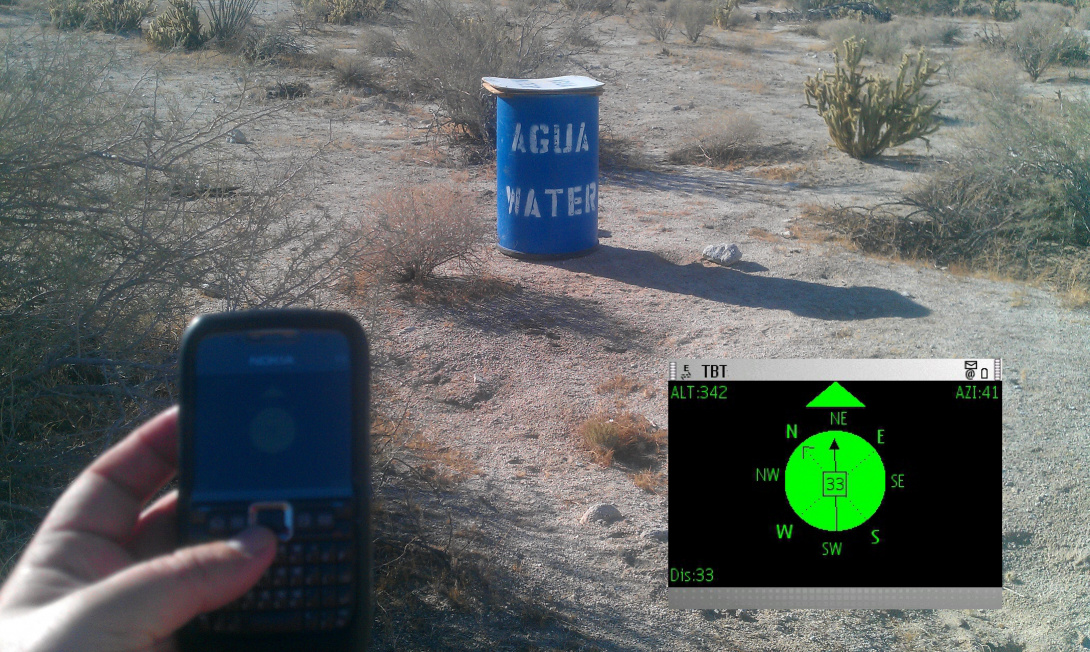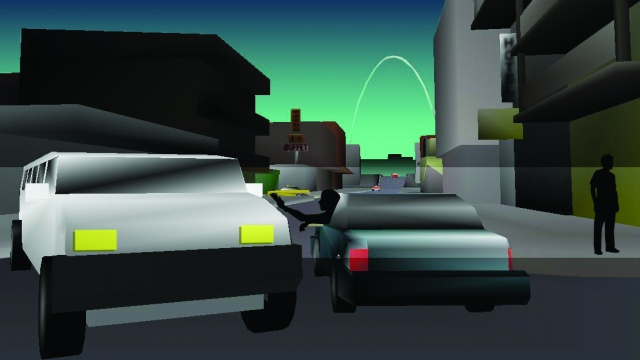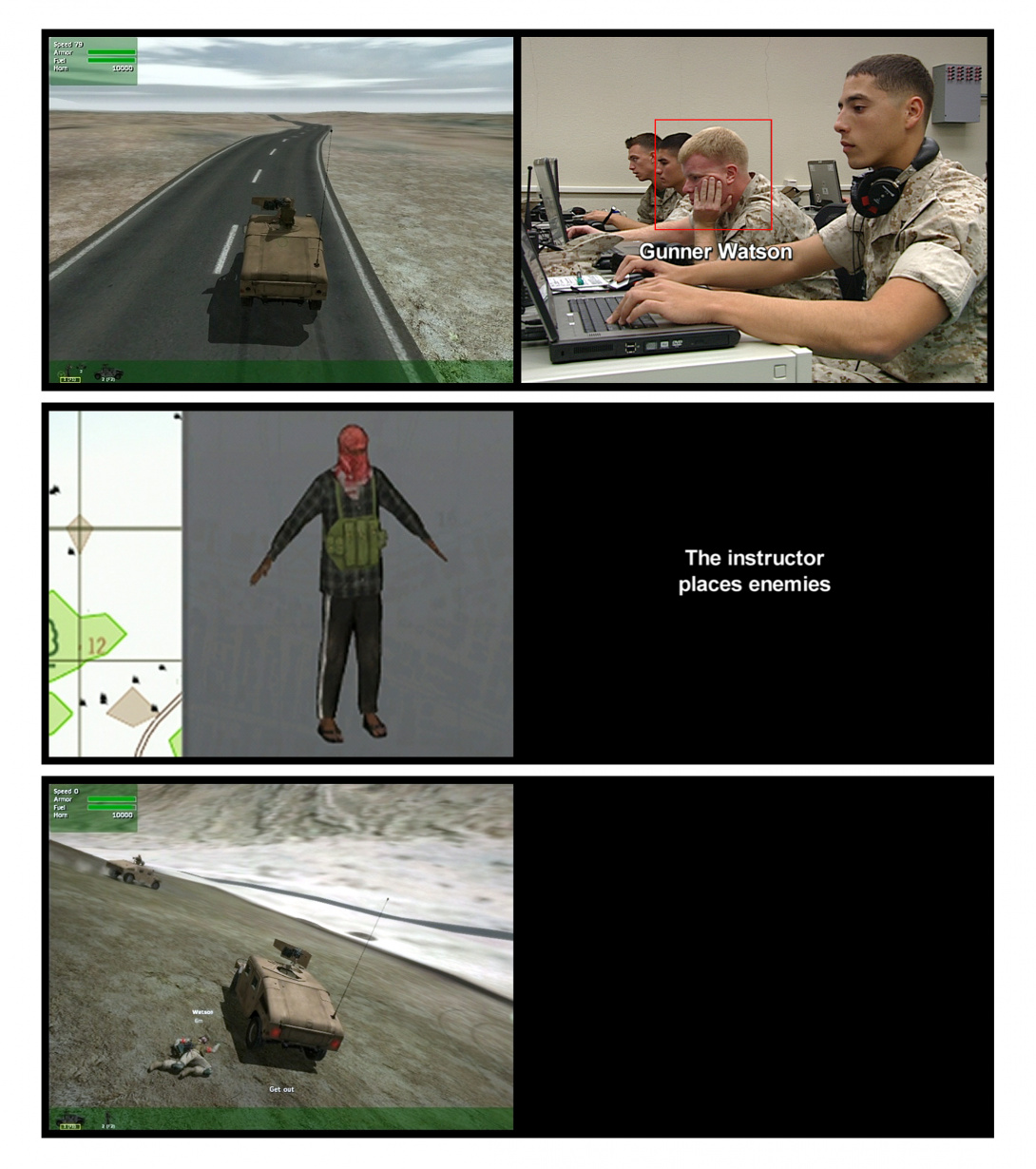Fourteen international artists employ tools of democracy to shed light on previously covert information in a post-9/11 world.
SAN JOSE, California (June 26, 2015)—The San Jose Museum of Art will present the first survey of work by artists who are responding to the uncertainties of the post-9/11 world. Covert Operations: Investigating the Known Unknowns includes works by international artists who pursue the complex relationships among freedom, security, privacy, and secrecy in the violent and volatile decades following the 9/11 terrorist attacks. These artists employ the tools of democracy to bear witness to attacks on liberty and abuses of power. Part 1 of the exhibition, opening June 30, 2015, will focus on artists who use the visual language of gaming in their work: Electronic Disturbance Theater 2.0, Harun Farocki, and Anne-Marie Schleiner and Luis Hernandez Galvan. On August 29, the main section of the exhibition will open with works by Ahmed Basiony, Thomas Demand, Hasan Elahi, David Gurman, Jenny Holzer, Trevor Paglen, Taryn Simon, David Taylor, and Kerry Tribe.
“As we pass the second anniversary of the shocking revelations about widespread, international data collection, and with the approval of the USA Freedom Act very much in the news, this exhibition is ever more timely and relevant,” said Susan Krane, Oshman Executive Director.
The title of the exhibition was inspired by U.S. Secretary of Defense Donald Rumsfeld’s response to a question at a 2002 news conference about the existence of weapons of mass destruction. “There are known knowns; there are things we know we know. We also know there are known unknowns; that is to say we know there are some things we do not know. But there are also unknown unknowns—the ones we don’t know we don’t know.” Rumsfeld’s insight into our post-9/11 landscape illustrates the logic behind the phrase “war on terror."
The artists in the exhibition use legal procedures such as the Freedom of Information Act as well as traditional research methods and resources such as government archives, field research, and insider connections to create works that provide visual proof of previously unreported information and government actions that limit civil rights. The artists probe subjects that range from classified military sites and reconnaissance satellites to border and immigration surveillance, terrorist profiling to narcotics and human trafficking, illegal extradition flights to nuclear weapons. Artists such as Jenny Holzer (United States) examine the complicity of both governmental and individual actors in human rights violations. Harun Farocki (Germany [German-annexed Czechoslovakia]), and Taryn Simon (United States) pry into the hidden institutional structures and economy of the United States intelligence community, or the “black world.” David Taylor (United States) photographs the US/Mexico border to illustrate complex issues of immigration, border security, human and drug smuggling, and environmental impact. The collaborative Electronic Disturbance Theater 2.0 (United States) and husband-and-wife collaborators Anne-Marie Schleiner and Luis Hernandez Galvan (United States, Mexico) testify to personal discrimination imposed on them in the name of national security.
The first phase of Covert Operations, opening June 30, showcases artists’ stylistic use of technology, gaming, and computer-generated imagery and examines the ways in which digital gaming has responded to the terrorist attacks of 9/11. It will include works by Electronic Disturbance Theater 2.0, Farocki, and Schleiner and Galvan. Electronic Disturbance Theater created Transborder Immigrant Tool, a mobile-phone technology that provides poetry to immigrants crossing the U.S.-Mexico border while indicating the location of highways, Border Patrol stations, and water caches in the Southern California desert. In Serious Games I–IV (2009–10), which comprises four distinct video installations—I: Watson is Down (2010), II: Three Dead (2010), III: Immersion (2009), and IV: A Sun with No Shadow (2010)—Farocki positions video game technology within the context of the military. He juxtaposed real-life wartime exercises with virtual reenactments in order to examine the relationship between technology, politics, and violence. Schleiner and Galvan created Corridos, a 3-D, open-source video arcade game that casts the viewer into the role of a smuggler across the U.S./Mexico border, providing a mediated experience of the violence and motivations that surround the border.
|
Covert Operations: Investigating the Known Unknowns was organized by the Scottsdale Museum of Contemporary Art. |
| This exhibition is made possible by an Emily Hall Tremaine Exhibition Award. The Exhibition Award program was founded in 1998 to honor Emily Hall Tremaine. It rewards innovation and experimentation among curators by supporting thematic exhibitions that challenge audiences and expand the boundaries of contemporary art. Additional support for the exhibition catalogue was provided by Walter and Karla Goldschmidt Foundation. |
 |
| The presentation of Covert Operations at the San Jose Museum of Art and the related community programs are sponsored by Donna Dubinsky and Leonard Shustek, the Frank-Ratchye Family Foundation in honor of Jenny Holzer, The John S. and James L. Knight Foundation, Melanie and Peter Cross, and McManis Faulkner. |
| Mobile technology for visitor engagement and feedback has been made possible by in-kind support from the app CrowdPoll. |
SAN JOSE MUSEUM OF ART
The San Jose Museum of Art celebrates new ideas, stimulates creativity, and inspires connection with every visit. Welcoming and thought-provoking, the Museum rejects stuffiness and delights visitors with its surprising and playful perspective on the art and artists of our time.
The San Jose Museum of Art is located at 110 South Market Street in downtown San Jose, California. The museum is open Tuesday through Sunday, 11 PM to 5 PM and until 8 PM or later on the third Thursday of each month. For more information, call 408.271.6840 or visit www.SanJoseMuseumofArt.org.
# # #
Programs at the San Jose Museum of Art are made possible by generous operating support from the David and Lucille Packard Foundation, Yvonne and Mike Nevens, a Cultural Affairs grant from the City of San Jose, and the Richard A. Karp Charitable Foundation.


